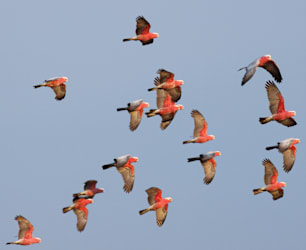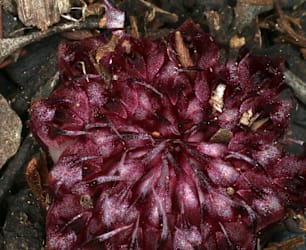This week’s muse is a mollusc whose shell you’ve undoubtedly encountered if you’ve ever walked a beach anywhere on the south coastline of Australia. It’s an off-white shell around six centimetres, but can grow to double that and can live for as long as 20 years.
Dicathais orbita, otherwise known as the cart-rut shell. Both the scientific name and the common name have interesting stories hailing back to European colonisation. The early establishment of museums throughout Australia allowed naturalists to study the flora and fauna of the newly invaded country. The mollusc specialists (known as malacologists) in Sydney described a white shell with deep crenulations that reminded them of the tracks left by horse-drawn carts. Thus the mode of transport of the day inspired the common name cart-rut shell, which was formally named Dicathais orbita in 1791.
Thirty years later, similar snails were found around the coasts of Melbourne but with shallower grooves and a smoother surface. These were named dog winkles for reasons known only to those naturalists, or more formally, Dicathais textilosa. When a creamy white shell made itself known in Perth 20 years after that, the naturalists of the time noted its smooth shell, completely free of ridges but with small nodules and called it Dicathais aegrota.
So, for a while it was believed that these snails were different species within the same genus of Dicathais. That was until three malacologists in 1973 took a closer look. They put the crenulated Dicathais orbita from NSW into a still-water aquarium for three years, where the animal gradually lost its ridges, moving first into the southern form, Dicathais textilosa, before moving into the smoothest noduled form, Dicathais aegrota. They concluded that in fact, Dicathais is monotypic, meaning the genus consists of only one species (Dicathais orbita) that changes its form based on its local habitat conditions, including water temperature, diet, substrate and exposure to wave action. Not all heroes wear capes.
The cart-rut shell is a predatory carnivore that isn’t picky when it comes to their prey. They’ll happily prey upon mussels, turban snails, barnacles and fellow cart-rut snails. Whether they are playing predator or cannibal, they attack their prey using their radula, a hard modified tongue meaning ‘little scraper’ in Latin. They simultaneously release acidic enzymes that soften the shell of the prey as they scrape away until a hole forms, allowing them access to the soft animal within. The cart-rut snail then sucks out the tissue of the prey through the hole. Rather than waiting for prey to reach them, cart-rut snails forage up the shoreline as the tide rises before returning to their sheltered niches as the tide lowers.
Besides being a coloniser’s muse, the cart-rut snail and its cousins have some royal history. Each egg produced by the snail is encapsulated in membranes forming a somewhat cylindrical capsule, which is joined to many others as an egg mass and attached to a hard substrate like a rock. I occasionally come across empty egg masses washed up on the shore. Precursors for the pigment Tyrian purple, otherwise known as royal or imperial purple, are found within the gonads and egg casings of the cart-rut snail. In ancient times, snails in the same family (Muricidae) were used to produce Tyrian purple pigment for textile dying. The extraction involved crushing thousands of snails in a time consuming and laborious process that meant the pigment was expensive and highly sought-after. The pigment became associated with the wealth and power leading to the idea of purple being a ‘royal’ colour, which still persists today.
Looking at the dull white mollusc, you wouldn’t immediately guess that it has connections to royalty. I have a soft spot for overlooked species, particularly ones that are common and seemingly unremarkable. Take a closer look and often those unassuming creatures surprise you with their stories and interesting life histories.
I also have an innate passion for knowing the creatures around me, as if knowing their names and behavioural nuances reminds me that we are all threads woven into the same web of life. There is nearly no better feeling to me than stepping into nature and calling on the names of the plants and animals around me like old friends. Perhaps, you’ll notice next time you step over a cart-rut shell and stop to say hello.









